Are you ready to be captivated by the stunning beauty of the avian world? Look no further than our list of the 30 Most Captivating and Beautiful Birds in the World. From the majestic peacock to the tiny bee hummingbird, these birds will leave you in awe with their vibrant colors and unique features.
Get ready to learn about the fascinating lives of these winged wonders and discover why they are truly some of the most captivating creatures on the planet. Get ready to spread your wings and take flight on a journey of beauty and wonder!
Table of Contents
- 1 Most Beautiful Birds In The World
- 1.1 Golden Pheasant
- 1.2 Blue Jay
- 1.3 Red Crested Turaco
- 1.4 Painted Bunting
- 1.5 American Flamingo
- 1.6 Hyacinth Macaw
- 1.7 Quetzal
- 1.8 Hoopoe
- 1.9 Atlantic Puffin
- 1.10 Rainbow Lorikeet
- 1.11 Common Kingfisher
- 1.12 Peafowl
- 1.13 Victoria Crowned Pigeon
- 1.14 Keel-billed Toucan
- 1.15 Baltimore Oriole
- 1.16 African Crowned Crane
- 1.17 Bohemian Waxwing
- 1.18 Broad-Billed Hummingbird
- 1.19 Dusky Lory
- 1.20 Scarlet Macaw
- 1.21 Peacock
- 1.22 Wood Duck
- 1.23 Great Cormorant
- 1.24 Blue-winged Pitta
- 1.25 Lilac Breasted Roller
- 1.26 The Secretary Bird
- 1.27 Western Tanager
- 1.28 White-faced Ibis
- 1.29 Mountain Bluebird
- 1.30 Northern Cardinal
- 1.31 Indian Paradise Flycatcher
- 2 Birdwatching Checklist: See the World’s Most Beautiful Birds
- 3 Frequently Asked Questions
- 3.1 Which is the prettiest bird in the world?
- 3.2 Which is the most beautiful and colorful bird?
- 3.3 What is the sweetest bird in the world?
- 3.4 What is the most expensive bird in the world?
- 3.5 What is the cutest looking bird?
- 3.6 What is the most exotic looking bird?
- 3.7 What is the most rare and beautiful bird?
- 3.8 Which bird has the most beautiful feathers?
- 3.9 What birds represent beauty?
- 3.10 What is the rarest exotic bird?
- 4 Author
Most Beautiful Birds In The World
Golden Pheasant
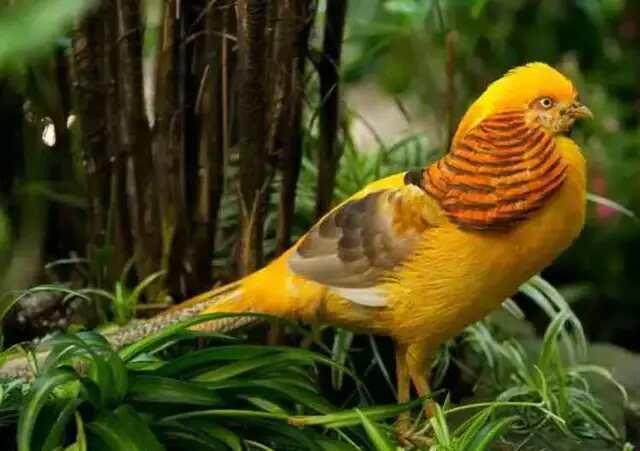
The Golden Pheasant (Chrysolophus pictus) is a stunning bird native to the mountainous regions of Western China. Renowned for its vibrant plumage, it inhabits dense forests, shrublands, and bamboo thickets.
Sporting a varied diet, the Golden Pheasant primarily feeds on seeds, fruits, insects, and vegetation. While not known for extensive migrations, these birds do exhibit some seasonal movements in search of food and suitable breeding grounds.
As for its size, adult males can reach lengths of about 90-105 cm (35-41 inches), with their elaborately colored plumage showcasing a striking contrast of rich red, yellow, and gold hues.
| Characteristic | Male | Female |
|---|---|---|
| Length (including tail) | 90 – 105 cm (35 – 41 in) | 60 – 80 cm (24 – 31 in) |
| Weight | 600 – 800 g (1.3 – 1.8 lbs) | 500 – 600 g (1.1 – 1.3 lbs) |
Blue Jay

The Blue Jay (Cyanocitta cristata) is a striking North American bird known for its vibrant blue plumage, striking white face markings, and distinctive black collar. This medium-sized songbird inhabits a vast range across eastern and central parts of North America, spanning from southern Canada to Florida.
Blue Jays thrive in a diverse array of habitats, including deciduous and mixed forests, urban parks, and suburban areas, where their omnivorous diet grants them adaptability. Their diet consists of nuts, seeds, insects, and occasionally small vertebrates.
During migration, some Blue Jays might shift southward for the winter, although many remain year-round residents in their respective territories.
| Characteristic | Measurement |
|---|---|
| Length | 9 – 12 inches (23-30 cm) |
| Wingspan | 13 – 17 inches (33-43 cm) |
| Weight | 2.5 – 3.5 ounces (70-100 g) |
Red Crested Turaco
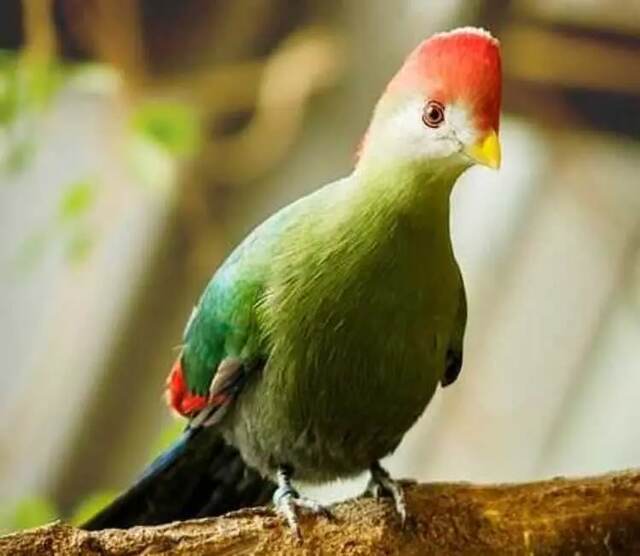
The Red-crested Turaco (Tauraco erythrolophus) is a strikingly beautiful bird species found in various parts of sub-Saharan Africa. Its distinctive appearance is characterized by vibrant green plumage, a scarlet red crest on its head, and elegant crimson flight feathers.
This avian gem prefers a variety of habitats, including forests, woodlands, and savannas. Its diet consists primarily of fruits, flowers, and leaves, which it adeptly plucks using its specialized bill.
Although the Red-crested Turaco is not known for long-distance migration, it may exhibit some seasonal movements in search of food and suitable breeding sites.
| Characteristic | Measurement |
|---|---|
| Length | Approximately 42 – 46 cm |
| Wingspan | About 44 – 50 cm |
| Weight | Around 225 – 270 grams |
| Crest Length | About 5 – 6 cm |
Painted Bunting
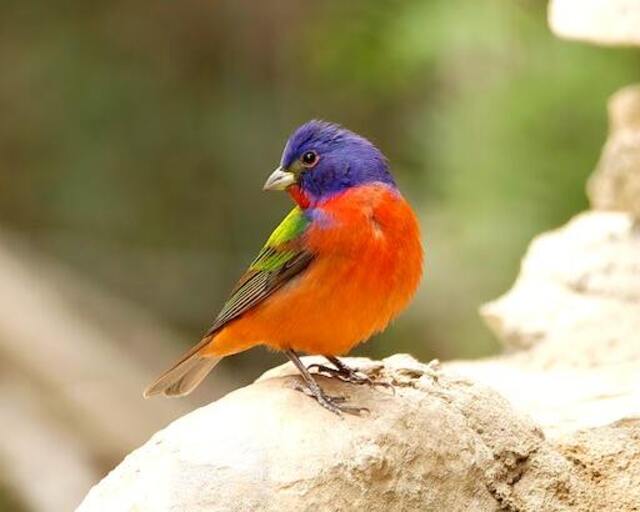
The Painted Bunting (Passerina ciris) is a stunningly colorful songbird found across North America. Renowned for its vibrant plumage, this small bird inhabits diverse habitats including grasslands, shrubby areas, and coastal habitats.
Its diet comprises seeds, insects, and fruits. With striking blue, green, and red hues, male Painted Buntings are especially captivating.
These birds embark on an impressive migration, spanning from their breeding grounds in the southern United States to their wintering grounds in Central America. Females, while less colorful, exhibit a subtle beauty.
| Characteristic | Measurement |
|---|---|
| Length | 12-14 cm (4.7-5.5 in) |
| Wingspan | 20 cm (7.9 in) |
| Weight (Male) | 13-17 g (0.46-0.6 oz) |
| Weight (Female) | 10-13 g (0.35-0.46 oz) |
American Flamingo
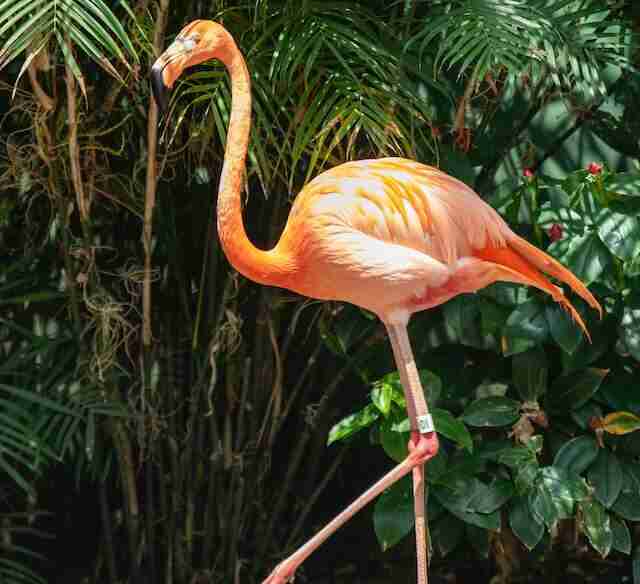
The American Flamingo (Phoenicopterus ruber) is a striking wading bird known for its vibrant pink plumage and distinct curved bill. It inhabits various regions of the Americas, including the Caribbean, coastal areas of South America, and the Galápagos Islands.
These elegant birds are commonly found in lagoons, estuaries, and saline lakes, where they feed on a diet primarily composed of algae, aquatic plants, and small invertebrates.
While some populations are sedentary, others undertake seasonal migrations in search of suitable breeding and feeding grounds.
| Characteristic | Measurements |
|---|---|
| Height | 3.3 to 4.6 feet (1 to 1.4 meters) |
| Wingspan | 4.6 to 5.5 feet (1.4 to 1.7 meters) |
| Weight | 5.5 to 7.7 pounds (2.5 to 3.5 kg) |
Hyacinth Macaw
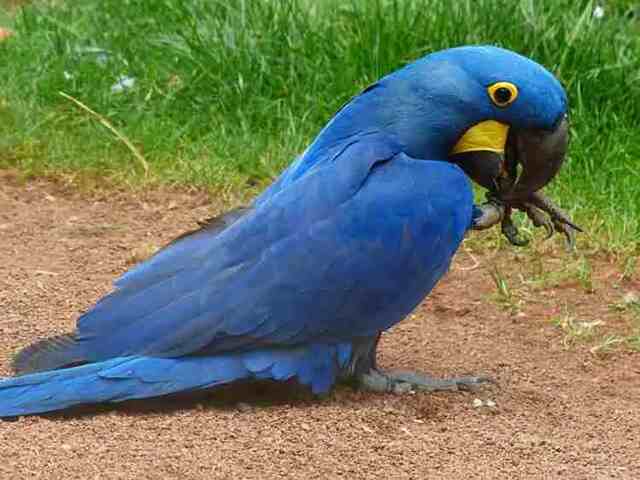
The Hyacinth Macaw (Anodorhynchus hyacinthinus) is a magnificent bird known for its stunning cobalt-blue plumage and impressive size, measuring up to 100 cm (3.3 ft) in length.
Native to central and eastern South America, these macaws inhabit a range stretching from Brazil through parts of Bolivia and Paraguay. They thrive in a variety of habitats, including humid forests, savannas, and palm groves.
Feeding primarily on palm nuts and seeds, they also consume fruits and occasionally seek out mineral-rich clay. Unlike many other bird species, Hyacinth Macaws are not migratory; they tend to stay within their preferred habitats year-round.
| Size | Wingspan | Weight |
|---|---|---|
| Approximately 100 cm | Around 130 cm | 1.2 – 1.7 kg |
Quetzal
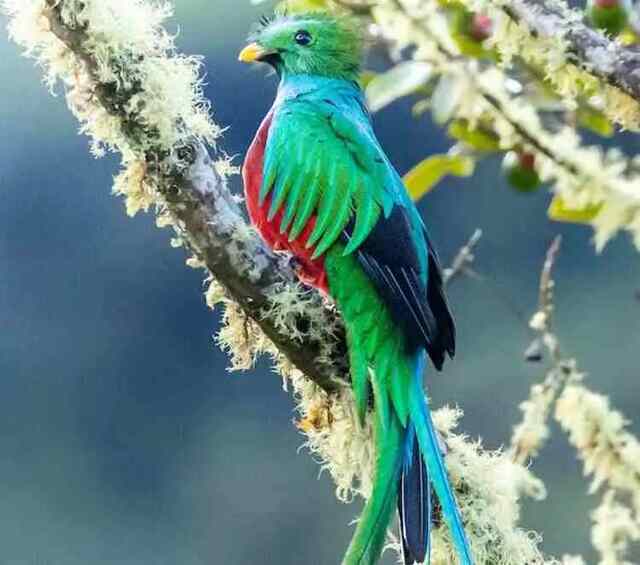
The Resplendent Quetzal (Pharomachrus mocinno) is a breathtaking bird species found in the cloud forests of Central America, including countries like Costa Rica, Guatemala, and Honduras. Its vibrant emerald-green plumage, iridescent feathers, and long tail make it a symbol of beauty and freedom.
Resplendent Quetzals inhabit these montane forests at elevations between 1,500 to 3,000 meters, where they feed primarily on fruits, insects, and small vertebrates.
While they are known to be relatively sedentary, some individuals may undertake altitudinal migrations in response to seasonal changes in food availability.
This magnificent bird’s length ranges from 35 to 40 cm, with a wingspan of 62 to 68 cm, and they weigh around 210 to 250 grams.
| Characteristic | Measurement |
|---|---|
| Length | 35 – 40 cm |
| Wingspan | 62 – 68 cm |
| Weight | 210 – 250 g |
Hoopoe
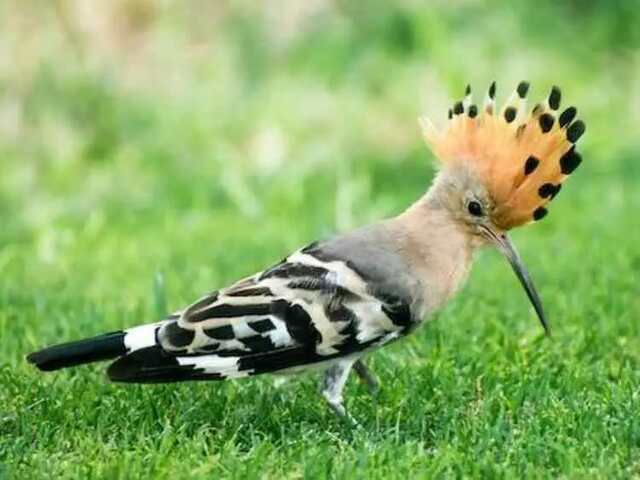
The Hoopoe (Upupa epops) is a distinctive bird known for its striking appearance and unique vocalizations. Found across Europe, Asia, and parts of Africa, the Hoopoe inhabits a range of habitats, including woodlands, savannas, and grasslands.
It predominantly feeds on insects and their larvae, using its long bill to probe and extract prey from the ground. While some populations are sedentary, others undertake seasonal migrations.
The Hoopoe’s iconic crest, crown of feathers, and distinctive “hoop hoop” call make it a favorite among bird enthusiasts.
| Characteristic | Measurement |
|---|---|
| Length | 25 – 32 cm (9.8 – 12.6 in) |
| Wingspan | 44 – 48 cm (17.3 – 18.9 in) |
| Weight | 46 – 89 g (1.6 – 3.1 oz) |
Atlantic Puffin
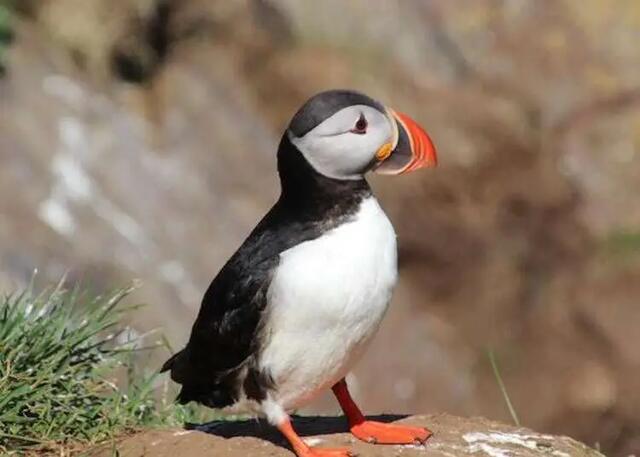
The Atlantic Puffin (Fratercula arctica) is a charming seabird known for its striking appearance and playful behavior. It primarily inhabits the North Atlantic Ocean, with a range extending from the eastern coast of North America to Northern Europe.
These puffins nest in colonies along coastal cliffs, using their sharp beaks to burrow into the soil. Their diet mainly consists of small fish, such as sand eels and herring, which they catch by diving underwater.
Atlantic Puffins are skilled fliers and swimmers, with distinct black and white plumage and a vibrant orange beak. During migration, they cover vast distances, often traveling far from their nesting sites.
| Characteristic | Measurement |
|---|---|
| Length | 25 – 30 cm |
| Wingspan | 50 – 60 cm |
| Weight | 300 – 500 grams |
Rainbow Lorikeet

The Rainbow Lorikeet (Trichoglossus haematodus) is a vibrant and captivating parrot species native to Australia, Indonesia, and various Pacific islands. Renowned for its brilliant plumage displaying a spectrum of vivid colors, it thrives in diverse habitats including rainforests, woodlands, and urban environments.
Its diet primarily consists of nectar, pollen, and fruits, making it an essential pollinator for various plant species. While not known for extensive migrations, these lorikeets engage in seasonal movements in search of food and breeding grounds.
The Rainbow Lorikeet’s striking appearance, adaptable nature, and ecological role make it a cherished and integral part of its native ecosystems.
| Characteristic | Measurement |
|---|---|
| Length | 25-30 cm |
| Wingspan | 17-20 cm |
| Weight | 75-157 grams |
Common Kingfisher
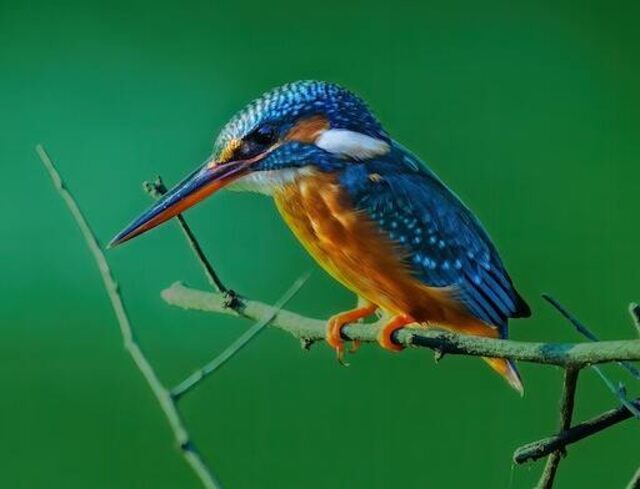
The Common Kingfisher (Alcedo atthis) is a vibrant bird species known for its striking appearance and remarkable hunting skills. Found across Europe, Asia, and parts of Africa, this charismatic bird inhabits a diverse range of aquatic environments, including rivers, lakes, and coastal areas.
Its brilliant blue and orange plumage makes it a conspicuous sight as it perches near the water’s edge, ready to dive for its prey. Feeding primarily on fish, the Common Kingfisher employs its keen vision to spot its prey underwater before swiftly diving in with remarkable accuracy.
While some populations are sedentary, others undertake short migratory journeys in response to changing weather conditions. Here is a table presenting key physical attributes of the Common Kingfisher:
| Length | Wingspan | Weight |
|---|---|---|
| 14 cm | 24-26 cm | 35-40 g |
Peafowl
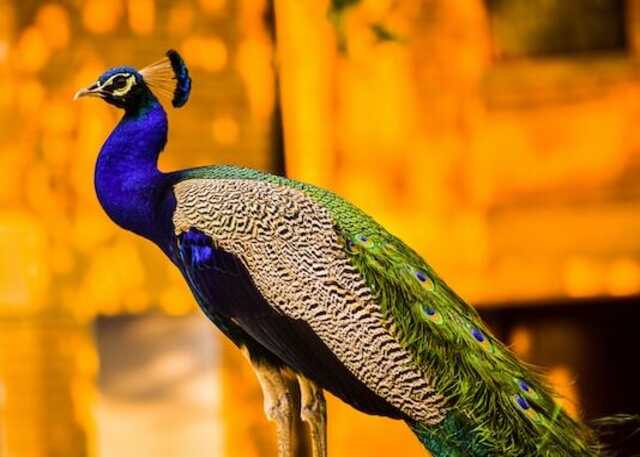
Peafowl, or peacocks, are large, colorful birds native to South Asia. They are known for their striking plumage, which includes iridescent feathers in shades of blue, green, and gold. Peafowl are found in a variety of habitats, including forests, savannas, and agricultural areas.
They are omnivorous and feed on a diet of insects, small mammals, reptiles, and plants. The Indian peafowl is the most well-known species of peafowl and is often kept in captivity for its beauty.
These birds are not migratory and generally remain in the same area throughout the year. The average length of an Indian peafowl is 100-120 cm, with a wingspan of 150-160 cm and a weight of 2.75-6 kg.
| Species Sex | Length | Wingspan | Weight |
|---|---|---|---|
| Male Peafowl | 4.9-9.8 ft | 4.9-5.6 ft | 8.8-13.2 lbs |
| Female Peafowl | 3.3-3.9 ft | 3.3-3.9 ft | 4.4-8.8 lbs |
Victoria Crowned Pigeon

The Rainbow Lorikeet (Trichoglossus moluccanus) is a stunning parrot species renowned for its vibrant plumage and playful nature. Native to Australia, it inhabits coastal regions, rainforests, and woodlands.
Its range also extends to nearby islands and even urban areas, drawn by flowering trees and shrubs that make up its primary diet of nectar, pollen, and fruits.
These gregarious birds are not migratory but exhibit some local movements in response to food availability and seasonal changes.
In terms of physical characteristics, Rainbow Lorikeets measure around 25-30 cm (10–12 inches) in length, with a wingspan of about 17-20 cm (7-8 inches) and a weight of 75–157 grams.
| Characteristic | Measurement |
|---|---|
| Length | 25-30 cm |
| Wingspan | 17-20 cm |
| Weight | 75-157 g |
Keel-billed Toucan
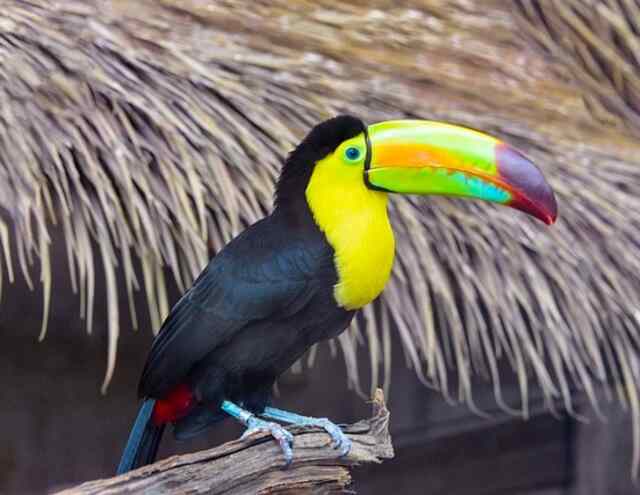
The Keel-billed Toucan (Ramphastos sulfuratus) is a striking bird native to the tropical forests of Central and South America. With its vibrant plumage and iconic oversized bill, this toucan is a captivating sight. It inhabits a range of forested environments, including rainforests, woodlands, and lowland areas.
Its diet primarily consists of fruits, but it also consumes insects, eggs, and even small vertebrates. Unlike many other bird species, Keel-billed Toucans are not known for long-distance migrations.
Instead, they tend to stay within their preferred habitats year-round. In terms of physical characteristics, they measure around 17–22 inches in length, boast a wingspan of about 16–19 inches, and typically weigh between 380 and 500 grams.
| Characteristic | Measurement |
|---|---|
| Length | 17-22 inches (43-56 cm) |
| Wingspan | 16-19 inches (40-48 cm) |
| Weight | 380-500 grams |
Baltimore Oriole
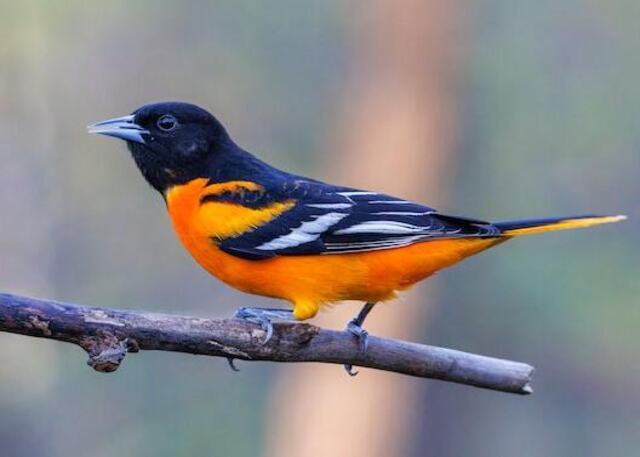
The Baltimore Oriole (Icterus galbula) is a striking songbird native to North America. Known for its vibrant orange and black plumage, the Baltimore Oriole inhabits a diverse range of habitats, including open woodlands, parks, and suburban areas across the eastern and central parts of the continent.
Its diet primarily consists of insects, fruits, and nectar, making it an essential pollinator. These migratory birds embark on remarkable journeys, with populations from northern regions migrating to Central America and back each year.
The Baltimore Oriole measures around 7–8 inches in length, boasts a wingspan of 9–10 inches, and weighs approximately 1-1.5 ounces. Their distinctive appearance and melodious calls make them a beloved sight and sound in various North American landscapes.
| Characteristic | Measurement |
|---|---|
| Length | 7-8 inches |
| Wingspan | 9-10 inches |
| Weight | 1-1.5 ounces |
African Crowned Crane
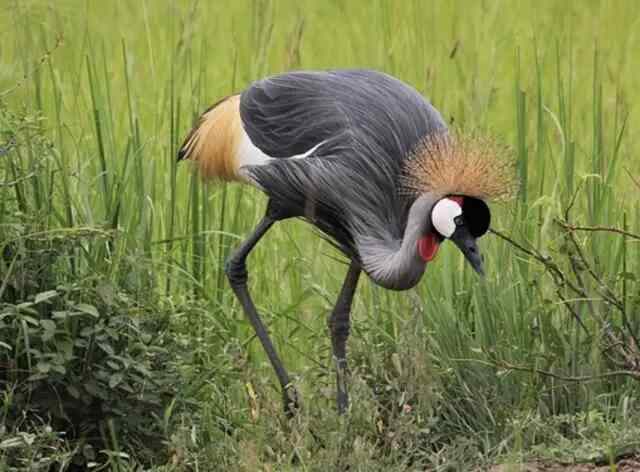
The African Crowned Crane (Balearica regulorum) is a striking bird species known for its distinctive appearance, featuring a crown of golden feathers on its head. Native to sub-Saharan Africa, its range extends from Sudan to South Africa.
These elegant cranes primarily inhabit wetlands, marshes, and grasslands, where they forage for insects, small vertebrates, and plant matter. Unlike many crane species, African Crowned Cranes are not known for long-distance migrations, often staying within their preferred habitats year-round.
They possess an average length of 100-120 cm, a wingspan of approximately 180 cm, and a weight ranging from 3 to 4 kg.
| Characteristic | Measurement |
|---|---|
| Length | 100-120 cm |
| Wingspan | ~180 cm |
| Weight | 3-4 kg |
Bohemian Waxwing
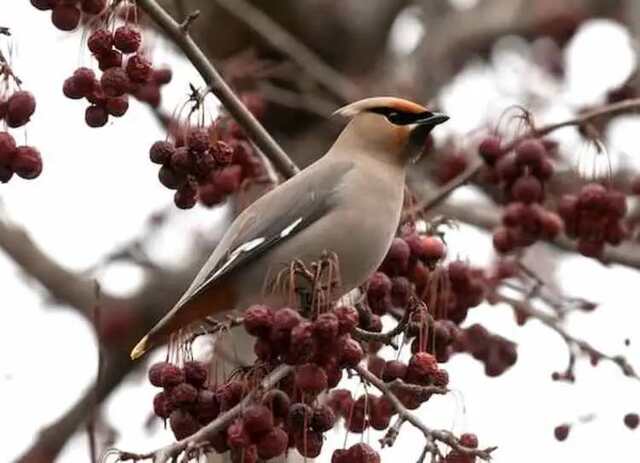
The Bohemian Waxwing (Bombycilla garrulus) is a captivating bird known for its sleek plumage and distinctive crest. Found in North America and Eurasia, its range spans across boreal forests, taiga, and tundra habitats.
With a penchant for berries, the waxwing’s diet primarily consists of fruits like juniper, rowan, and crabapple. Notable for its nomadic behavior, this species embarks on irregular migrations, driven by the availability of food sources.
The Bohemian Waxwing’s elegance is matched by its size, with a length of 18-21 cm (7-8 inches), wingspan of 32-35 cm (12.5-14 inches), and a weight of 55-65 grams.
| Length | Wingspan | Weight |
|---|---|---|
| 18-21 cm | 32-35 cm | 55-65 g |
Broad-Billed Hummingbird
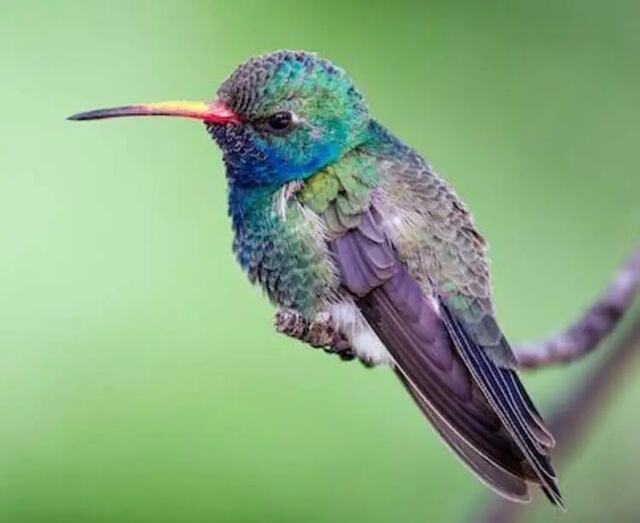
The Broad-Billed Hummingbird (Cynanthus latirostris) is a captivating avian species renowned for its vibrant iridescent plumage and unique bill shape. Native to the southwestern United States and parts of Mexico, this hummingbird thrives in a variety of habitats including open woodlands, gardens, and desert oases.
Its diet mainly comprises nectar from a diverse array of flowers, which it gathers using its specialized bill. In addition to nectar, it also consumes insects and spiders for protein.
During the breeding season, these birds undertake a remarkable migration, moving from their wintering grounds in Mexico to their breeding territories in the United States.
| Characteristic | Measurement |
|---|---|
| Length | 4 – 4.5 in |
| Wingspan | 4.5 – 5 in |
| Weight | 2 – 4 g |
Dusky Lory
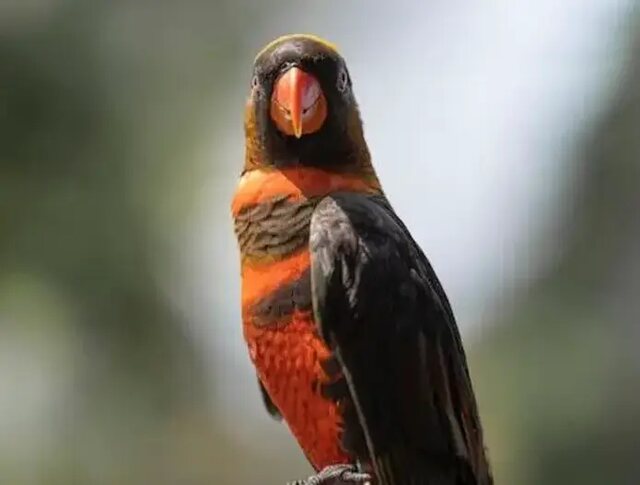
The Dusky Lory (Pseudeos fuscata) is a captivating parrot species renowned for its striking appearance and engaging behavior. Native to the lush rainforests of northern Australia, particularly in Queensland, it inhabits both coastal and mountainous regions.
Its vibrant plumage showcases a mix of deep blues, purples, and greens, accentuating its charm. Feeding predominantly on nectar, pollen, and fruits, the Dusky Lory plays a crucial role in pollination within its ecosystem.
Unlike some migratory birds, this species exhibits a sedentary lifestyle, preferring to stay within its established territory year-round.
| Characteristic | Measurement |
|---|---|
| Length | 25 – 30 cm |
| Wingspan | 30 – 35 cm |
| Weight | 150 – 200 g |
Scarlet Macaw
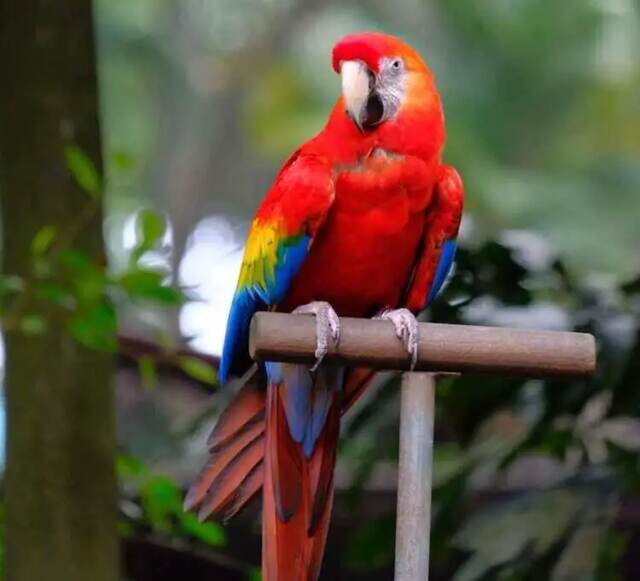
The Scarlet Macaw (Ara macao) is a magnificent parrot species renowned for its vibrant plumage and remarkable intelligence. This striking bird is native to the dense rainforests of Central and South America, spanning a range that includes countries like Mexico, Peru, and Brazil.
Its habitat preference includes tropical lowland forests, where it thrives in the canopy levels. The Scarlet Macaw’s diet primarily consists of fruits, nuts, seeds, and occasionally, vegetation. Unlike some bird species, Scarlet Macaws are not migratory; they tend to stay in their territories year-round.
In terms of physical characteristics, these birds boast a length of about 80 to 90 cm (31 to 35 inches), an impressive wingspan of 110 to 120 cm (43 to 47 inches), and a weight of approximately 900 to 1,100 grams (2 to 2.4 pounds).
| Characteristic | Measurement |
|---|---|
| Length | 80 – 90 cm (31 – 35 in) |
| Wingspan | 110 – 120 cm (43 – 47 in) |
| Weight | 900 – 1,100 g (2 – 2.4 lbs) |
Peacock
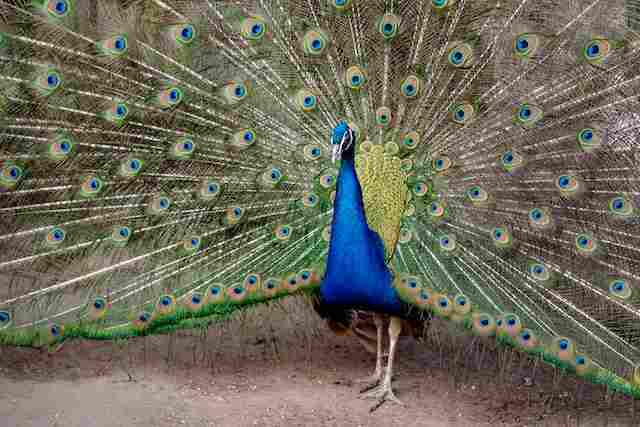
The Peacock, a magnificent avian species native to the enchanting landscapes of South Asia including India, Sri Lanka, and Pakistan, is celebrated for its iridescent plumage and captivating courtship displays.
These splendid birds thrive in a diverse range of habitats, displaying a preference for lush woodlands, expansive grasslands, and even human-cultivated areas. Their diet is equally versatile, encompassing seeds, insects, and even small reptiles.
Unlike many migratory counterparts, Peacocks are non-migratory, comfortably adapting to the seasonal shifts within their resident regions.
| Characteristic | Length | Wingspan | Weight |
|---|---|---|---|
| Measurements | 2.5-4.5 ft | 4.9-6 ft | 8.8-13 lb |
Wood Duck
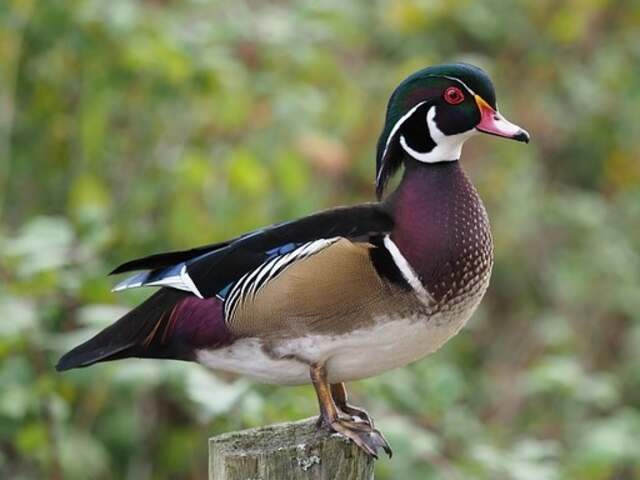
The Wood Duck (Aix sponsa) is a strikingly colorful waterfowl species found primarily in North America. Its range extends from southern Canada to the southern United States, and it thrives in various freshwater habitats including lakes, ponds, swamps, and wooded wetlands.
Renowned for its vibrant plumage, the Wood Duck exhibits distinctive iridescent hues, making it one of the most visually appealing ducks. This species follows a diverse diet, encompassing aquatic plants, insects, and small aquatic creatures.
Interestingly, Wood Ducks are known for their unique breeding behavior, often using natural tree cavities or nest boxes for shelter. As for migration, northern populations tend to migrate southward during the winter months to escape freezing conditions.
| Characteristic | Measurement |
|---|---|
| Length | 47-54 cm |
| Wingspan | 66-73 cm |
| Weight | 500-700 g |
Great Cormorant
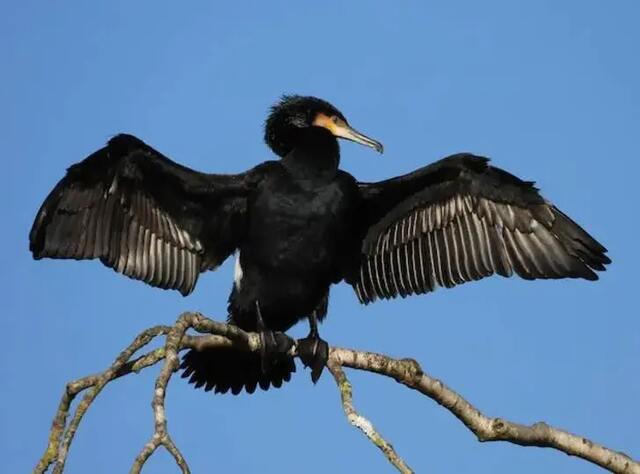
The Great Cormorant (Phalacrocorax carbo) is a prominent aquatic bird known for its striking appearance and fascinating behavior. It boasts a widespread range, being found across various continents, including Europe, Asia, Africa, and Australia.
These adaptable birds inhabit a diverse array of environments, from coastal shores and estuaries to inland freshwater bodies. The Great Cormorant’s diet mainly consists of fish, which it hunts by diving beneath the water’s surface and utilizing its sharp bill to catch its prey.
Additionally, this species is notable for its migratory behavior, with many populations undertaking seasonal movements between breeding and wintering grounds.
| Measurement | Length | Wingspan | Weight |
|---|---|---|---|
| Great Cormorant | 80-100 cm | 121-160 cm | 1.5-3.5 kg |
Blue-winged Pitta
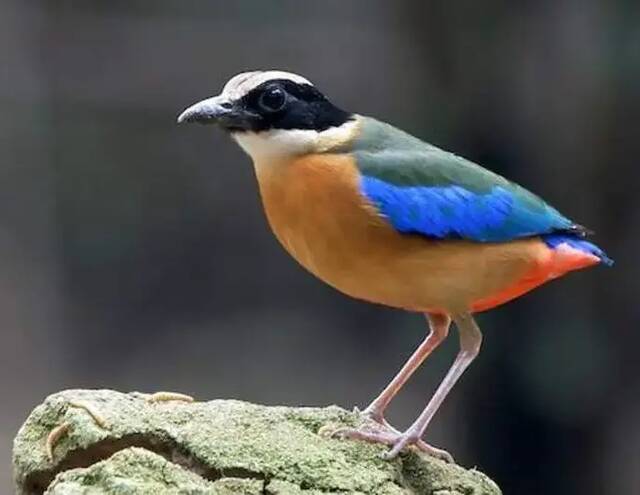
The Blue-winged Pitta (Pitta moluccensis) is a strikingly colorful bird found in Southeast Asia. Its range spans from eastern India to Indonesia, encompassing countries like Thailand, Malaysia, and the Philippines.
This small bird thrives in dense lowland forests, often near water bodies such as streams or swamps. The Blue-winged Pitta’s diet mainly consists of insects, worms, and small invertebrates, which it forages for on the forest floor using its distinctive vivid blue wings and contrasting black head.
While some populations are sedentary, others undertake short-distance migrations in response to changing weather patterns. Here’s a table detailing some key physical characteristics:
| Characteristic | Measurement |
|---|---|
| Length | 18-19 cm |
| Wingspan | 25-30 cm |
| Weight | 50-60 g |
Lilac Breasted Roller

The Lilac-breasted Roller (Coracias caudatus) is a stunning bird found in sub-Saharan Africa. Its vibrant plumage showcases shades of turquoise, green, and lilac, making it a visual delight.
These rollers inhabit savannas, woodlands, and grasslands, often perching on exposed branches to spot prey. Their diet primarily consists of insects like grasshoppers, beetles, and small vertebrates.
While some populations are migratory, the species’ movements vary based on food availability and climatic conditions.
| Characteristic | Measurement |
|---|---|
| Length | 14 – 15 inches |
| Wingspan | 20 – 22 inches |
| Weight | 140 – 190 grams |
The Secretary Bird
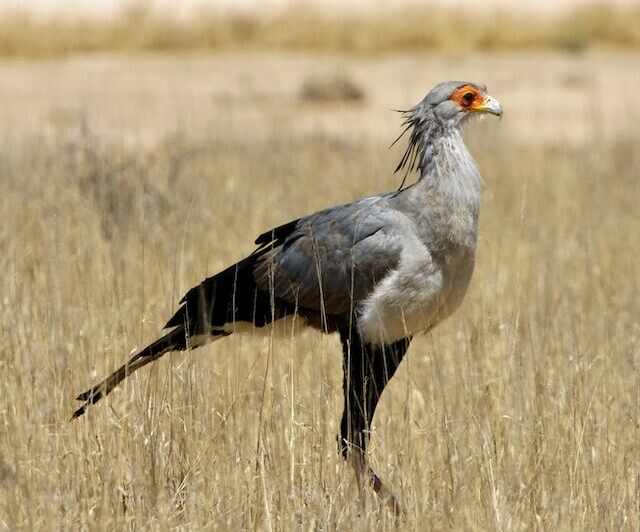
The Secretary Bird (Sagittarius serpentarius) is a distinctive bird of prey found in the grasslands and savannas of sub-Saharan Africa. With its striking appearance, characterized by long legs, a crest of feathers on its head, and a unique eagle-like profile, it stands out as an iconic species.
This avian predator primarily feeds on small mammals, snakes, and insects, utilizing its strong legs to stamp on prey to incapacitate them. While not known for long-distance migration, it may undertake local movements in search of food.
The Secretary Bird’s average length ranges from 1.2 to 1.3 meters (3.9 to 4.3 feet), boasting an impressive wingspan of about 2.1 to 2.3 meters (6.9 to 7.5 feet). Despite its considerable size, it maintains a relatively light weight, typically ranging between 2.3 to 4.5 kilograms (5.1 to 9.9 pounds).
| Characteristic | Measurement |
|---|---|
| Length | 1.2 – 1.3 meters |
| Wingspan | 2.1 – 2.3 meters |
| Weight | 2.3 – 4.5 kilograms |
Western Tanager
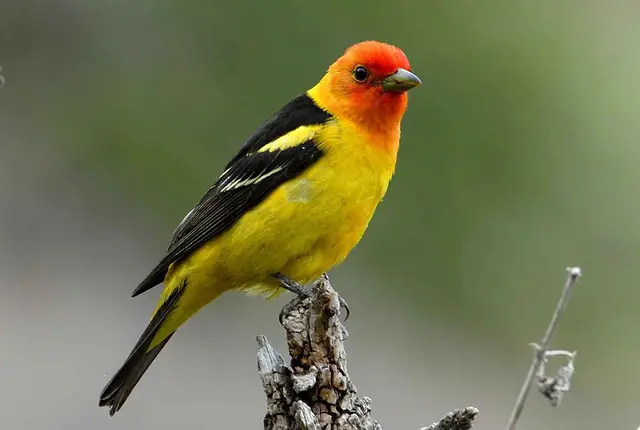
The Western Tanager (Piranga ludoviciana) is a striking songbird found in the western regions of North America. Its range extends from the Pacific coast of Alaska down to Central America. This bird inhabits a variety of environments, including coniferous and mixed woodlands, as well as mountainous regions.
Recognized for its vibrant plumage, the male boasts a bright yellow body with a distinct orange-red head, while the female showcases more subdued colors. The Western Tanager’s diet consists primarily of insects, berries, and fruits.
This species is known for its migratory behavior, spending winters in Central America and Mexico before returning to its breeding grounds in North America during the warmer months.
| Characteristic | Measurement |
|---|---|
| Length | 7 – 7.5 inches |
| Wingspan | 11 – 12 inches |
| Weight | 24 – 28 grams |
White-faced Ibis
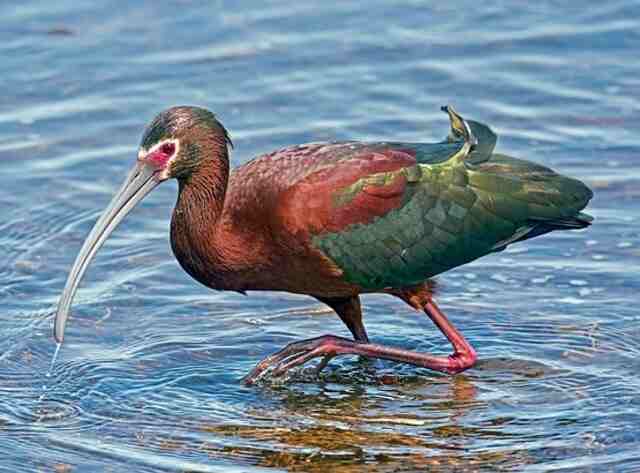
The White-faced Ibis (Plegadis chihi) is a distinctive wading bird characterized by its sleek, dark plumage and striking white face. It inhabits wetlands and marshes across North and South America, with its range extending from the western United States to parts of Argentina and Chile.
These ibises are versatile feeders, consuming a varied diet of aquatic invertebrates, small fish, and insects, often foraging in shallow waters using their long, curved bills. Some populations of White-faced Ibis are migratory, traveling substantial distances between their breeding and wintering grounds.
As for its physical attributes, the ibis typically measures around 53–65 cm (21–26 inches) in length, boasts a wingspan of approximately 76–89 cm (30–35 inches), and weighs in at 400–800 grams (14–28 ounces).
| Characteristic | Measurement |
|---|---|
| Length | 53–65 cm (21–26″) |
| Wingspan | 76–89 cm (30–35″) |
| Weight | 400–800 g (14–28 oz) |
Mountain Bluebird
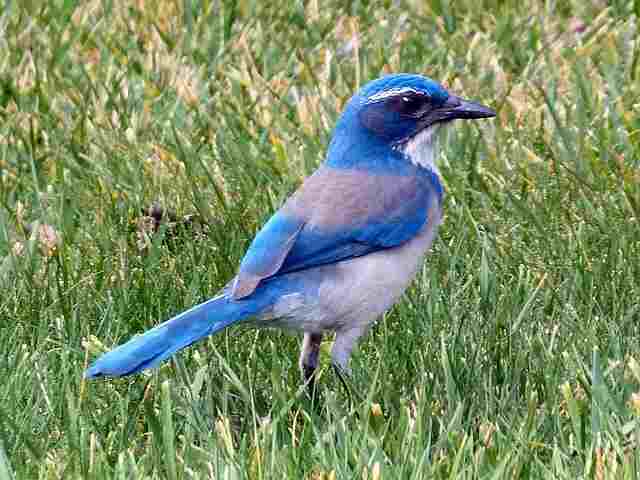
The Mountain Bluebird (Sialia currucoides) is a striking North American songbird known for its vibrant blue plumage and melodious songs.
It inhabits a diverse range of habitats, including open woodlands, grasslands, and mountainous regions throughout western North America. Its diet primarily consists of insects and berries, with a strong preference for grasshoppers and crickets.
During migration, these bluebirds cover considerable distances, with some populations traveling as far south as Mexico during the winter months.
| Characteristic | Measurement |
|---|---|
| Length | 16-20 cm |
| Wingspan | 32-39 cm |
| Weight | 27-32 g |
Northern Cardinal
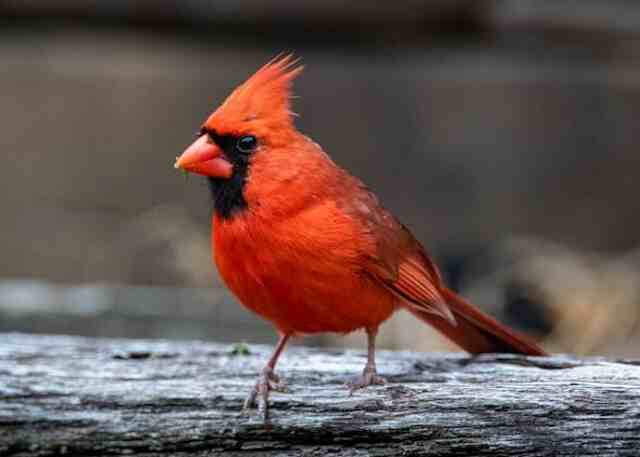
The Northern Cardinal (Cardinalis cardinalis) is a striking bird species found across North America. Its vibrant red plumage and distinctive crest make it easily recognizable.
Cardinals inhabit a range that stretches from southern Canada to parts of Mexico, primarily residing in woodlands, gardens, and shrubby areas. Their diet consists of seeds, fruits, insects, and occasionally small vertebrates.
While some populations are non-migratory and remain in their territories year-round, others undertake short-distance migrations in response to weather and food availability.
| Characteristic | Measurement |
|---|---|
| Length | 8.3-9.3 in |
| Wingspan | 9.8-12.2 in |
| Weight | 1.5-1.7 oz |
Indian Paradise Flycatcher
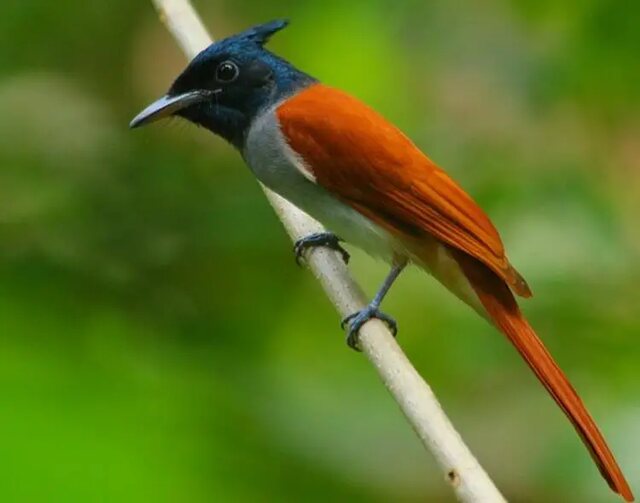
The Indian Paradise Flycatcher (Terpsiphone paradisi) is a captivating bird renowned for its striking appearance. Found across the Indian subcontinent, it inhabits diverse landscapes including forests, woodlands, and gardens.
With a graceful white body and elongated central tail feathers that stream behind it like ribbons, this flycatcher is a sight to behold. Its diet primarily consists of insects, which it catches mid-flight with agile aerial maneuvers.
The Indian Paradise Flycatcher is known for its migratory behavior, with some populations undertaking seasonal journeys to escape harsh weather conditions.
| Attribute | Measurement |
|---|---|
| Length | 20 – 24 cm |
| Wingspan | 28 – 34 cm |
| Weight | 17 – 22 g |
Observing these measurements, it’s clear that the Indian Paradise Flycatcher is not only a visual marvel but also a fine example of avian elegance and adaptability.
Birdwatching Checklist: See the World’s Most Beautiful Birds
- Binoculars: A good pair of binoculars will help you get a closer look at birds in their natural habitat.
- Camera: A camera will allow you to capture photos of the birds you see and share them with others.
- Guidebook: A guidebook can help you identify different bird species and learn more about their habits and habitats.
- Comfortable clothing and shoes: Depending on where you’re traveling, you may need to wear comfortable clothing and shoes suitable for hiking or walking long distances.
- Insect repellent: Insects can be a nuisance when birdwatching, so be sure to bring insect repellent to keep them at bay.
- Sun protection: Sunscreen, a hat, and sunglasses will help protect you from the sun’s harmful rays.
- Water and snacks: It’s important to stay hydrated and fueled while birdwatching, so bring plenty of water and snacks to keep you going.
- Patience and a sense of adventure: Birdwatching can be a rewarding but sometimes challenging activity, so be prepared to exercise patience and embrace the sense of adventure that comes with exploring the natural world.
Frequently Asked Questions
Which is the prettiest bird in the world?
The title of the prettiest bird is subjective, but the resplendent quetzal, with its vibrant green and red plumage, often claims this honor for its stunning appearance and cultural significance.
Which is the most beautiful and colorful bird?
The resplendent trogon, found in Central and South America, is often considered one of the most beautiful and colorful birds due to its iridescent green and red feathers.
What is the sweetest bird in the world?
The white-eyes, small songbirds found across Asia, Africa, and Europe, are often referred to as the sweetest birds due to their melodious and gentle songs.
What is the most expensive bird in the world?
The Hyacinth Macaw, known for its striking blue plumage, is one of the most expensive birds to own due to its rarity and demand in the pet trade.
What is the cutest looking bird?
The puffin, with its distinctive colorful beak and endearing appearance, is widely considered one of the cutest birds.
What is the most exotic looking bird?
The Mandarin Duck, native to East Asia, is renowned for its extraordinarily colorful and intricate plumage, giving it an incredibly exotic look.
What is the most rare and beautiful bird?
The Philippine Eagle, also known as the monkey-eating eagle, is both rare and beautiful, with its massive size, striking appearance, and critically endangered status.
Which bird has the most beautiful feathers?
The Peacock, specifically the Indian Peafowl, is celebrated for its stunning iridescent tail feathers that fan out in a magnificent display.
What birds represent beauty?
The Birds of Paradise, found in New Guinea and surrounding regions, are renowned for their elaborate and captivating courtship displays, symbolizing beauty and elegance.
What is the rarest exotic bird?
The Spix’s Macaw, native to Brazil, holds the title of one of the rarest exotic birds due to its near-extinct status in the wild, making efforts to save and breed it crucial for its survival.



